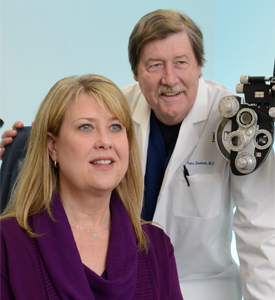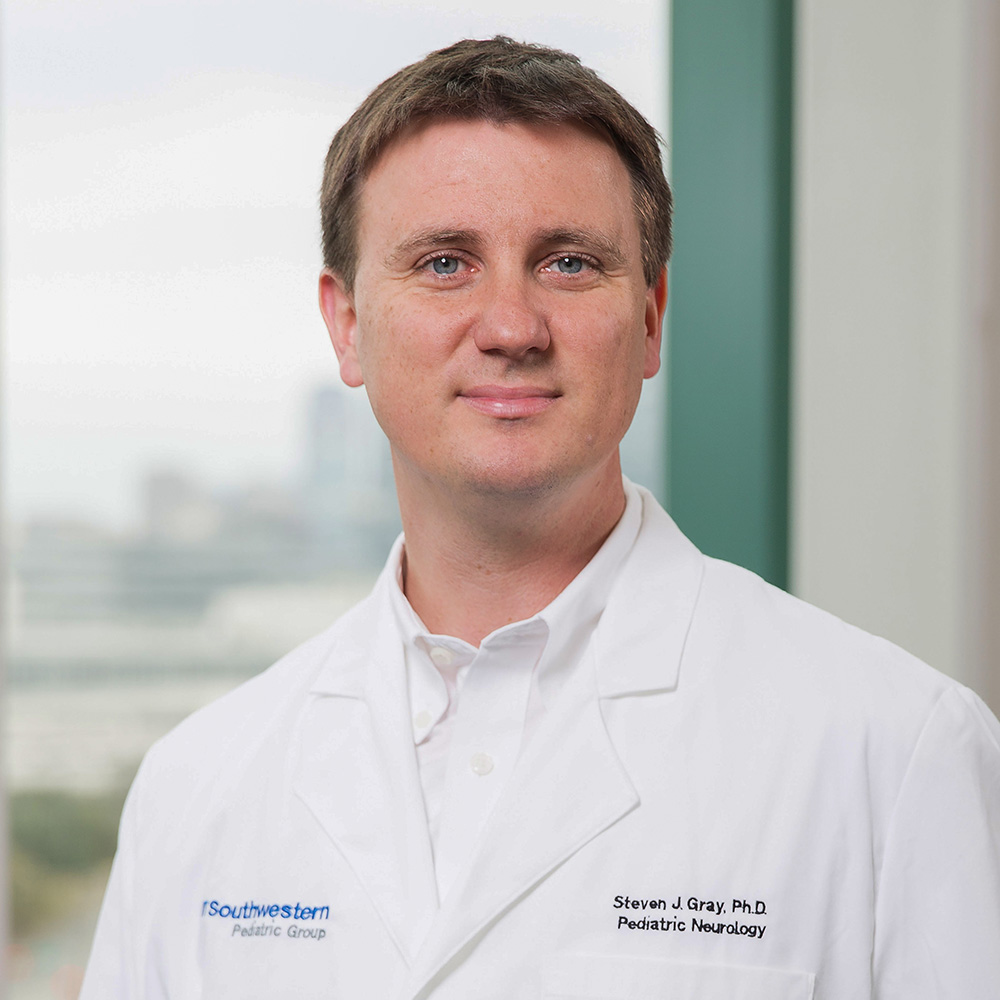Corneal transplants by ophthalmologists keep woman at helm of music magic
DALLAS – March 10, 2015 – For seven years, Patti Diou has been making music magic happen.

As executive director of the Levitt Pavilion for the Performing Arts in Arlington, Texas, she oversees an annual series of free outdoor concerts with musicians like Pentatonix, Ray Wylie Hubbard, and the Old 97’s. Mrs. Diou says she couldn’t have shepherded all this summertime fun without the two donated corneas that allowed her physicians at UT Southwestern Medical Center to maintain her sight.
Mrs. Diou has an eye disease called keratoconus, which causes the cornea of the eye to become thin and cone-shaped. The cornea is the clear layer over the front of the eye, analogous to the crystal on a watch. The curvature of the cornea provides two-thirds of the focus of the eye. The misshapen cornea, in conjunction with the scarring that the disease causes, can lead to profound changes in vision, said Dr. Wayne Bowman, Professor of Ophthalmology at UT Southwestern.
Many patients who have keratoconus can have their vision corrected to an acceptable degree with glasses or contact lenses. Mrs. Diou’s disease, however, got so bad that contact lenses couldn’t fix her vision.
“I went to the eye doctor and got new glasses and contact lenses. Two weeks later I went back because I couldn’t see out of them. I got new lenses, and then a week later I couldn’t see again,” said Mrs. Diou.
In 2007, she had her first corneal transplant on her left eye. Last year, she had a transplant on her right eye.
March is National Eye Donor Month, a time for remembering the departed individuals who donated their corneas and for encouraging everyone to commit to becoming a donor. Approximately 40,000 corneal transplants are performed in the United States each year. With a success rate of greater than 85 percent, corneal transplants are the most successful of all transplant surgeries.
The Transplant Services Center on the UT Southwestern campus serves as the regional tissue bank for North Central Texas. The Center procures corneas and other tissue from donors who signed up with a donor registry or whose families gave permission for donation at the time of their loved one’s death, and then provides those tissues to some 160 hospitals as they are needed.
“In addition to restoring or preserving sight for the corneal recipient, cornea donation can also help with the donor family’s grieving process. Not only does it provide them the opportunity to act on the known wishes of their loved one, but it also gives them the opportunity to reflect on the positive thoughts of their loved one continuing to help others,” said Donna Drury, Director of the Transplant Services Center.
Dr. Bowman noted that over the years significant progress has been made in corneal transplantation. “We’re much better at screening corneas for disease than ever before, and there’s been tremendous progress in the field of eye banking and transplant,” he said.
As an example of that progress, he explained that corneas are composed of five layers and transplant techniques have become so precise that physicians can, as appropriate, work with just a single layer of the cornea.
“The great thing about keratoconus is we can remove the most severely affected part of the cornea and replace it with a donor cornea and restore much, if not all, of the patient’s vision,” said Dr. Bowman, who holds the Irene Wadel and Robert I. Atha, Jr. Professorship in Ophthalmology, in Honor of R. Wayne Bowman, M.D. “Keratoconus is one of the most successful indications for corneal transplants.”
Nevertheless, the corneal transplant procedure requires many adjustments and ongoing visits with the ophthalmologist and optometrist.
Mrs. Diou’s condition could mean she’ll need another transplant in the future, said Dr. Bowman. But for now, she sees well enough to perform everyday tasks, including driving, and to live an active, high-powered life.
“I’d be blind if I hadn’t had the corneal transplants,” said Mrs. Diou. “I’m very grateful to my donors’ families and to my doctors.”
“We are very fortunate in the Dallas-Fort Worth area to have at UT Southwestern one of the top eye banks in the country, as well as outstanding corneal transplant surgeons like Dr. Bowman,” said Dr. James P. McCulley, Chairman of Ophthalmology, who holds The David Bruton, Jr. Chair in Ophthalmology.
Individuals who would like to become donors can register online at www.donatelifetexas.org.
About UT Southwestern Medical Center
UT Southwestern, one of the premier academic medical centers in the nation, integrates pioneering biomedical research with exceptional clinical care and education. The institution’s faculty includes many distinguished members, including six who have been awarded Nobel Prizes since 1985. Numbering more than 2,700, the faculty is responsible for groundbreaking medical advances and is committed to translating science-driven research quickly to new clinical treatments. UT Southwestern physicians provide medical care in 40 specialties to more than 91,000 hospitalized patients and oversee more than 2 million outpatient visits a year.
###
Media Contact: Cathy Frisinger
214-648-3404
cathy.frisinger@utsouthwestern.edu
To automatically receive news releases from UT Southwestern via email, subscribe at www.utsouthwestern.edu/receivenews.




